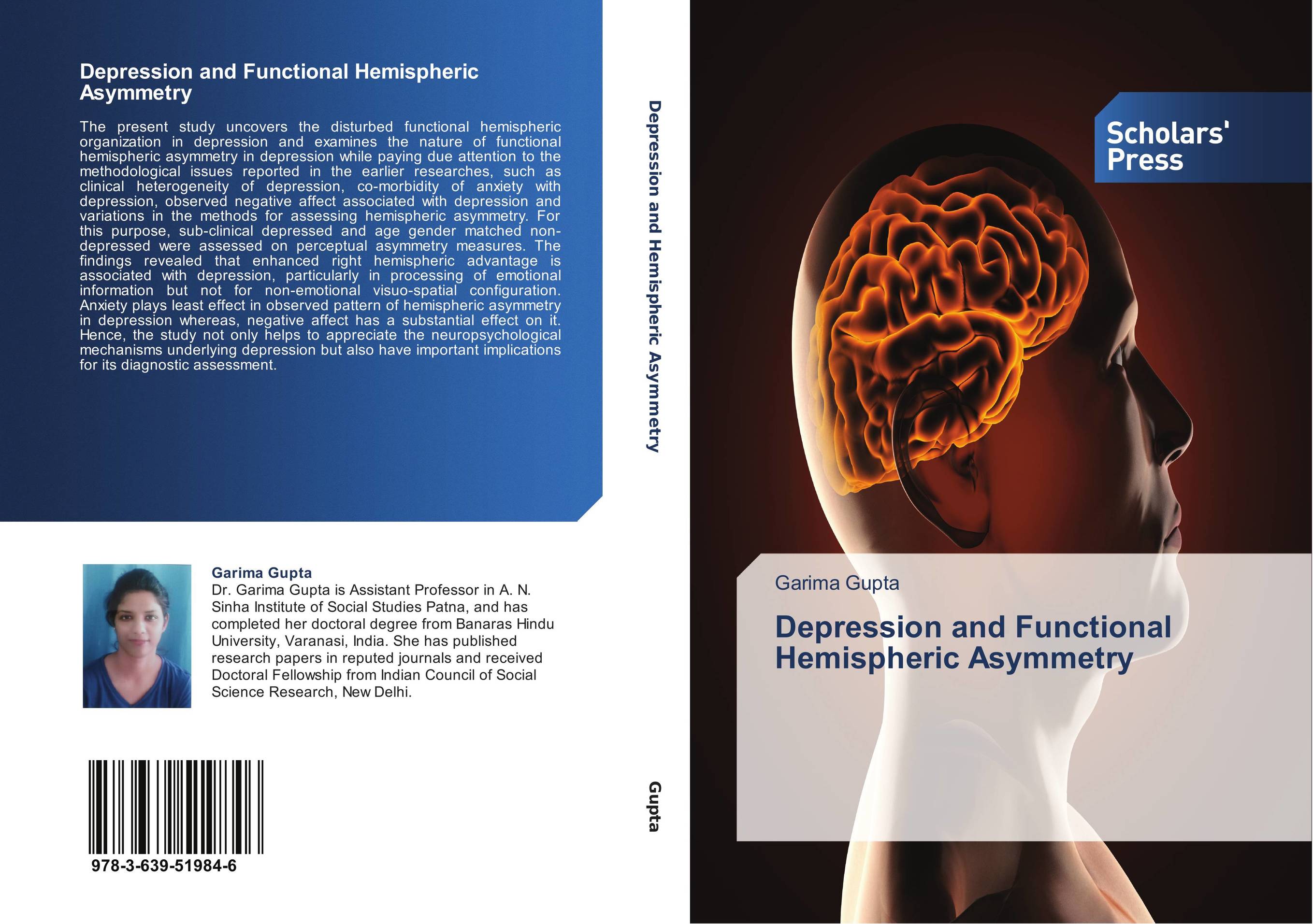| Поиск по каталогу |
|
(строгое соответствие)
|
- Профессиональная
- Научно-популярная
- Художественная
- Публицистика
- Детская
- Искусство
- Хобби, семья, дом
- Спорт
- Путеводители
- Блокноты, тетради, открытки
Depression and Functional Hemispheric Asymmetry.

В наличии
| Местонахождение: Алматы | Состояние экземпляра: новый |

Бумажная
версия
версия
Автор: Garima Gupta
ISBN: 9783639519846
Год издания: 2014
Формат книги: 60×90/16 (145×215 мм)
Количество страниц: 276
Издательство: Scholars' Press
Цена: 57501 тг
Положить в корзину
| Способы доставки в город Алматы * комплектация (срок до отгрузки) не более 2 рабочих дней |
| Самовывоз из города Алматы (пункты самовывоза партнёра CDEK) |
| Курьерская доставка CDEK из города Москва |
| Доставка Почтой России из города Москва |
Аннотация: The present study uncovers the disturbed functional hemispheric organization in depression and examines the nature of functional hemispheric asymmetry in depression while paying due attention to the methodological issues reported in the earlier researches, such as clinical heterogeneity of depression, co-morbidity of anxiety with depression, observed negative affect associated with depression and variations in the methods for assessing hemispheric asymmetry. For this purpose, sub-clinical depressed and age gender matched non-depressed were assessed on perceptual asymmetry measures. The findings revealed that enhanced right hemispheric advantage is associated with depression, particularly in processing of emotional information but not for non-emotional visuo-spatial configuration. Anxiety plays least effect in observed pattern of hemispheric asymmetry in depression whereas, negative affect has a substantial effect on it. Hence, the study not only helps to appreciate the neuropsychological mechanisms underlying depression but also have important implications for its diagnostic assessment.
Ключевые слова: Depression, anxiety, Sub-clinical depression, negative affect, Functional Hemispheric Asymmetry, Perceptual asymmetry, Chimeric face test, Non-emotional visuo-spatial configuration, Selective functional facilitation hypothesis, Characteristic arousal asymmetry



